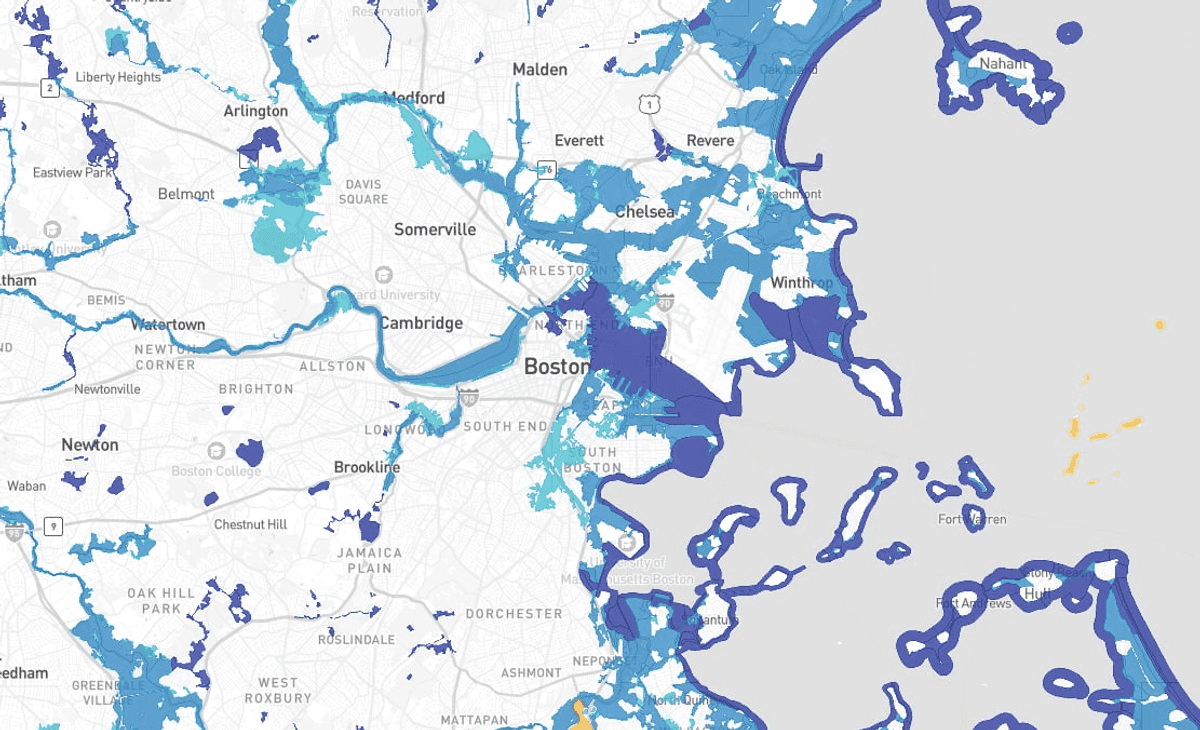Great Barrier Reef records largest annual coral loss in 39 years – Mainline Media News

Report on the State of the Great Barrier Reef and Implications for Sustainable Development Goals
Executive Summary
A 2024 annual survey conducted by the Australian Institute of Marine Science (AIMS) reveals that the Great Barrier Reef has suffered its most significant annual loss of live coral in four decades of record-keeping. This decline, primarily driven by climate change-induced coral bleaching, presents a severe challenge to the achievement of key United Nations Sustainable Development Goals (SDGs), particularly SDG 14 (Life Below Water) and SDG 13 (Climate Action). While overall coral cover remains near the long-term average due to recent growth, the record loss highlights a new level of volatility and underscores the detrimental impact of frequent, severe climate events on this critical marine ecosystem.
Key Findings from the AIMS 2024 Survey
The report details substantial impacts across the world’s largest reef ecosystem, a UNESCO World Heritage site covering 133,000 square miles. The findings demonstrate a direct failure to protect marine biodiversity as mandated by SDG 14.
- Record Coral Loss: The decline in live coral is the largest recorded in a single year within the 39-year history of the AIMS long-term monitoring program.
- Increased Volatility: Despite the loss, coral cover is close to its long-term average, having recovered from a high base recorded prior to the bleaching event. This fluctuation signals increasing instability in the ecosystem’s health.
- Widespread Impact: The damage was observed across the entire expanse of the reef, with significant regional variations.
Regional Coral Cover Decline
The annual loss of live coral varied significantly across the three main regions of the Great Barrier Reef:
- Southern Region: Experienced the most severe impact, with a reduction in live coral cover of nearly one-third.
- Northern Region: Suffered a 25% reduction in live coral cover.
- Central Region: Recorded a 14% reduction in live coral cover.
Impact on Sustainable Development Goals (SDGs)
The degradation of the Great Barrier Reef has profound implications for multiple SDGs, indicating a critical need for integrated policy and action.
- SDG 14 (Life Below Water): The massive coral mortality is a direct setback for Target 14.2, which calls for the sustainable management and protection of marine and coastal ecosystems to avoid significant adverse impacts. The event jeopardizes the immense biodiversity that the reef supports.
- SDG 13 (Climate Action): The bleaching is a direct manifestation of rising global temperatures and insufficient global progress on climate action. The findings validate the Intergovernmental Panel on Climate Change (IPCC) projection that coral-dominated ecosystems face existential threats at warming levels of 1.2°C and above, making the pursuit of SDG 13 more urgent than ever.
- SDG 11 (Sustainable Cities and Communities): As a UNESCO World Heritage site, the reef’s degradation represents a failure to protect the world’s natural heritage, a key component of Target 11.4.
- SDG 8 (Decent Work and Economic Growth): The health of the reef is intrinsically linked to local and national economies, particularly through tourism. Its decline threatens livelihoods and undermines efforts to promote sustainable tourism under Target 8.9.
Global Context and Future Outlook
The situation at the Great Barrier Reef is not an isolated incident but part of a global crisis that demands a coordinated international response, as envisioned by SDG 17 (Partnerships for the Goals).
- Global Bleaching Event: The reef’s decline coincides with the fourth recorded global mass coral bleaching event, which has impacted marine ecosystems in at least 83 countries since January 2023, according to the U.S. National Oceanic and Atmospheric Administration (NOAA).
- Vulnerability to Climate Change: The IPCC has identified tropical coral reefs as exceptionally vulnerable, projecting that they will be virtually non-existent if global warming exceeds 1.2°C. With the world having already warmed by 1.3°C, the window for action is closing rapidly.
- Conclusion: The long-term survival of the Great Barrier Reef and the fulfillment of SDG 14 are entirely dependent on immediate, ambitious, and sustained global efforts to achieve the goals of SDG 13. Without such action, the continued degradation of this and other vital marine ecosystems is inevitable.
SDGs Addressed in the Article
Explanation
The article primarily addresses two Sustainable Development Goals (SDGs) that are deeply interconnected with the issue of coral bleaching in the Great Barrier Reef.
- SDG 14: Life Below Water: This goal aims to “conserve and sustainably use the oceans, seas and marine resources for sustainable development.” The article’s entire focus is on the degradation of the Great Barrier Reef, a critical marine ecosystem. It details the “greatest annual loss of live coral,” the shrinking of “living coral cover,” and the overall “detrimental effects” on the world’s largest reef ecosystem, which is a UNESCO World Heritage Site.
- SDG 13: Climate Action: This goal calls for urgent action to “combat climate change and its impacts.” The article explicitly identifies climate change as the primary driver of the crisis. It states that coral deaths were “caused mainly by bleaching last year associated with climate change” and links the event to “record global heat in 2023 and 2024.” The article also references the UN’s Intergovernmental Panel on Climate Change, which declared coral reefs a “unique and threatened system” due to climate change.
Specific SDG Targets Identified
Explanation
Based on the article’s content, several specific targets under SDG 13 and SDG 14 can be identified as directly relevant to the challenges described.
- Target 14.2: “By 2020, sustainably manage and protect marine and coastal ecosystems to avoid significant adverse impacts, including by strengthening their resilience, and take action for their restoration…” The article highlights a failure to meet this target, describing “substantial impacts” and a “new level of volatility” on the reef. The discussion of record coral loss demonstrates that the ecosystem has not been successfully protected from the “significant adverse impacts” of ocean warming.
- Target 13.1: “Strengthen resilience and adaptive capacity to climate-related hazards and natural disasters in all countries.” The article underscores the vulnerability of coral reefs to the climate-related hazard of extreme ocean heat. The UN report cited warns that “tropical corals may be even more vulnerable to climate change than indicated in assessments” and that they are projected to reach a “very high risk of impact at 1.2°C,” indicating a critical lack of resilience.
- Target 14.a: “Increase scientific knowledge, develop research capacity and transfer marine technology… in order to improve ocean health…” The article is built upon the scientific work of institutions like the “Australian Institute of Marine Science,” which conducts an “annual survey,” and the “U.S. National Oceanic and Atmospheric Administration’s coral reef watch.” This reliance on data and monitoring demonstrates the critical role of scientific knowledge in understanding and addressing the health of marine ecosystems.
Indicators for Measuring Progress
Explanation
The article mentions or implies several quantitative and qualitative indicators that can be used to measure the status of the Great Barrier Reef and the impacts of climate change, aligning with the identified targets.
- Percentage of live coral cover loss: The article provides specific figures that serve as direct indicators of ecosystem health degradation. For example, “Living coral cover shrunk by almost a third in the south in a year, a quarter in the north and by 14% in the central region.”
- Prevalence and severity of coral bleaching: This is a key indicator of climate impact. The article notes that “nearly 84% of the world’s coral reef area” was hurt by heat stress and that aerial surveys found “widespread coral bleaching,” with “78 of the 281 reefs… more than 30% bleached.”
- Global temperature increase: This is a primary indicator for climate action (SDG 13). The article states, “The world has now warmed 1.3 degrees Celsius since pre-industrial times,” and links this warming directly to the vulnerability of coral reefs.
- Frequency of mass bleaching events: The article points to the “increasing frequency of coral bleaching” and notes that the world is experiencing its “fourth ever recorded — mass coral bleaching event,” which indicates a worsening trend and a failure to mitigate climate impacts.
SDGs, Targets, and Indicators Analysis
| SDGs | Targets | Indicators |
|---|---|---|
| SDG 14: Life Below Water | Target 14.2: Sustainably manage and protect marine and coastal ecosystems to avoid significant adverse impacts. |
|
| SDG 13: Climate Action | Target 13.1: Strengthen resilience and adaptive capacity to climate-related hazards. |
|
| SDG 14: Life Below Water | Target 14.a: Increase scientific knowledge and research capacity to improve ocean health. |
|
Source: mainlinemedianews.com

What is Your Reaction?
 Like
0
Like
0
 Dislike
0
Dislike
0
 Love
0
Love
0
 Funny
0
Funny
0
 Angry
0
Angry
0
 Sad
0
Sad
0
 Wow
0
Wow
0



























;Resize=805#)



















































